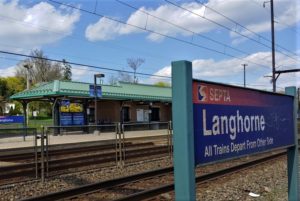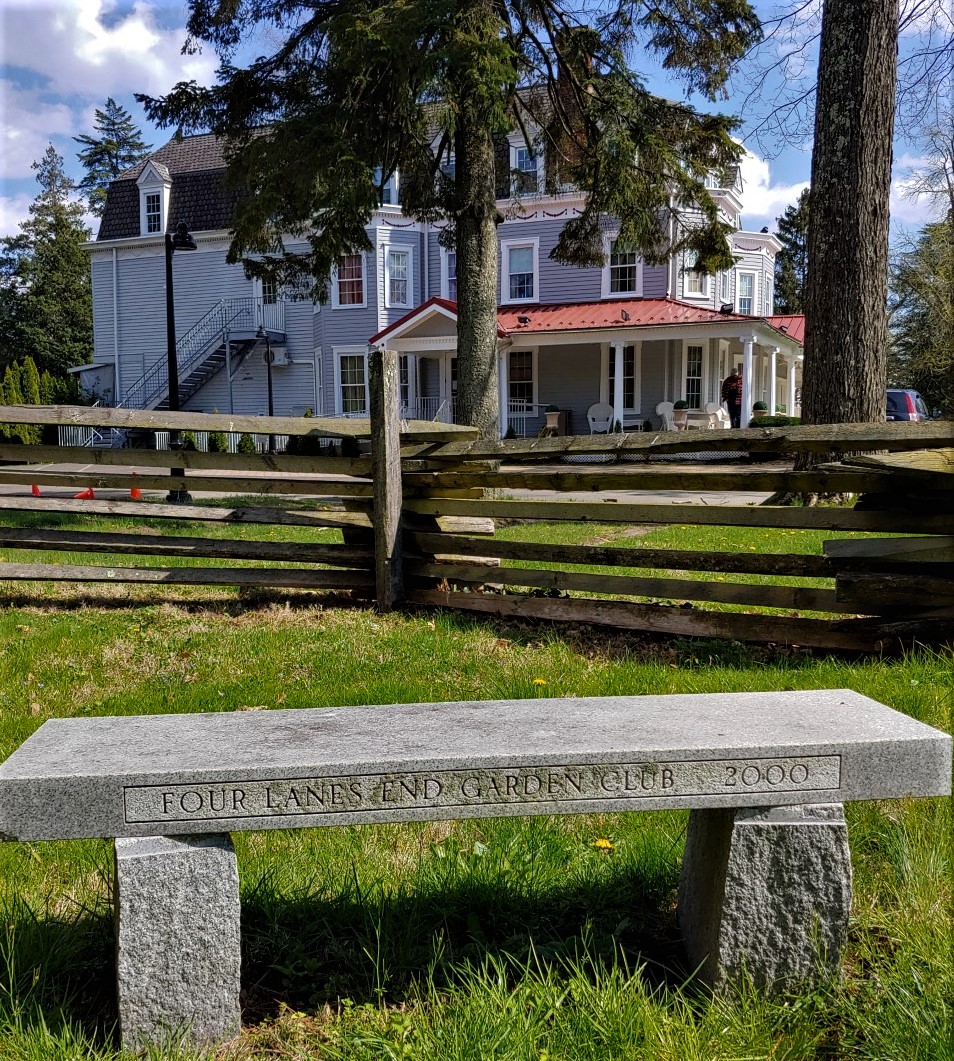The story of a colonel, a fire truck, post office,
railroad station and a fight between towns.
In my frequent dive into local history, I came across something I hadn’t fully understood before: How a Bucks County town discarded its name after an emotional fight with a neighboring town over the naming of a post office. Let’s backtrack.
Before 1790, William Richardson Atlee set up for business as an attorney in a crossroad’s village known as Four Lanes End in Lower Bucks County. The settlement clustered around a four-way intersection of two stage coach routes, one running between New York and Philadelphia and the other between Bristol and Easton. Bill’s claim to fame is his daddy. Revolutionary War Col. Samuel Atlee commanded troops who valiantly recaptured Old Stone House twice in the Battle of Brooklyn in 1776 before being overrun by the British.“Good God, what brave men must I lose this day!” shouted George Washington from a distance. Taken prisoner, Atlee was released two years later. His son Bill later married the daughter of Gen. Anthony “Mad Anthony” Wayne, one of Washington’s most fiery and prominent commanders.
With this patriotic pedigree, Bill’s law firm flourished as did Four Lanes End. So much so folks decided to buy a horse-drawn fire engine to protect the community. They raised the equivalent of $9,000 today to buy the equipment from a Philadelphia manufacturer. As the pumper neared completion, the company inquired about a name to be painted on the apparatus. Since Atlee had been a principal contributor, someone suggested it be named for him. But when it arrived in 1790, “Atleebury” was painted on both sides. Oh,well.
Sixteen years later in 1806, the federal government opened a post office in Four Lanes End named after the fire truck. Kinda. On April Fool’s Day, the stone building proclaimed “Attleborough”. It wasn’t long before Four Lanes End retreated into history in favor of the P.O. name.\
But wait. There’s more.

In 1876, the North Pennsylvania Railroad constructed a new line from Philadelphia to Bound Brook, N.J. serving passengers in Attleborough and the prosperous mill town of Hulmeville on Neshaminy Creek to the east. The railroad built a depot on the Attleborough border a mile from Hulmeville. Naturally, borough officials insisted the building be named Hulmeville Station. The proud folks of Attleborough demanded it be Attleborough Station. As the debate rageed, the railroad became impatient. The great Philadelphia Centennial Exposition marking the country’s 100th birthday was fast approaching. Trains would be packed. Franklin Comly, president on the railroad, wanted a name pronto. Neither town would relent. In frustration, Comly took charge. The station would be called Langhorne.
What?!
It seemed a logical choice . The entire area was once Langhorne Park, a 7,200-acre farm and mansion owned by Jeremiah Langhorne, a Quaker and former Chief Justice of the Pennsylvania Supreme Court. What Comley might not have realized is Jeremiah owned scores of slaves working his plantation who were freed upon his death in 1742. That part of Langhorne Park’s legacy had been shuffled into the deep background by the 19th century when the train station was built. For passengers arriving at the new “Langhorne” station, there was no such town. Attleborough quickly remedied that by adopting Langhorne as its new name.
There’s more.
Fourteen years after the station opened, an affluent mansion development district in Langhorne next to the depot incorporated as its own municipality of less than a square mile. Langhorne Manor Borough’s boundary effectively separated Langhorne from its train station. As for Hulmeville, it also became separated from the station by the formation of a new town on the Hulmeville side of the tracks known as Eden in its earliest days. Seizing the day at its incorporation in 1889, officials decided on a new name. Drum roll, please. Attleborough.
Talk about confusion!
When the new Attleborough got its own post office, mail addressed to Attleborough often was routed to the former Attleborough P.O. There was so much turmoil citizens appealed to county court for yet a new name – South Langhorne. Deal.
Local jockeying over town names seemed finally to come to an end until the mid-1940s arrived. South Langhorne hankered for a new identity after becoming a commercial/industrial hot spot. So, in 1947 the former Eden, former Attleborough, former South Langhorne became Penndel.
Whew!
Today land developers engage in a modified verison of this name game in other areas of Bucks. For instance, builders of housing developments in northern Middletown have persuaded the U.S. Post Office to have mail in the new developments sorted in the Yardley Post Office rather than in Langhorne. Why? Property is more valuable with a Yardley address. And so it goes. Roughly 30 years ago, the post office in Morrisville which sorted mail for Falls and Lower Makefield closed and moved to a new larger facility in Falls. So far there’s been no clamor in Falls or Lower Makefield to rename themselves Morrisville.
Sources include “Place Names in Bucks County Pennsylvania” by George MacReynolds published in 1942 by the Bucks County Historical Society.

